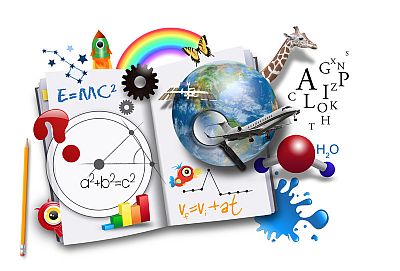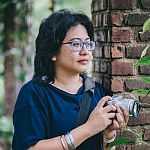GAM 2019 Blog
by Avivah Yamani
- Published: Saturday, April 20 2019 06:59

This year marks my 12th year working to popularise astronomy to the public using online media, Usually, national media outlets using our articles as their reference or interview me and the team as their resources. But the only things concerning me are the false issues since the first time I wrote an astronomy article to this day.
Last month, we had another false issue regarding Vernal Equinox. It is said: “Dear friends, do not forget to drink more, eat more fruits, and less outdoor activities from 22 - 28 March, since it will be Equinox, when the Sun reaches its closest point to the Earth and the temperature will increase several degrees. So be aware and don’t make yourself dehydrated or get sun stroke.”
People easily fall for false issues. No doubt astronomy is a gateway to learn many other fields of science. We can catch public attention and engage with the public easily through beautiful images from the universe or celestial events. Public curiosity on astronomical events is high but it also involves false claim such as belief on something bad will happen during eclipse or other misinformation and hoax.
The idea of mixing belief and and science has existed for centuries and we still encounter the issues in this modern day. People are easy to believe on false issue without questioning the idea and the facts behind them. Often times the boundary between science and pseudoscience is not easy to distinguish. To understand the difference between science and pseudoscience, let's see how they started to come up with conclusions.
Scientific process usually starts with question about the object or something we observe. The next step will be to construct our hypothesis, do the research, test the hypothesis, analyse the data, and deduct the conclusion. Sometimes the result can be different from the initial hypothesis. The process in pseudoscience will neglect many things. It usually starts with beliefs or ideas and then gets all the supporting evidence while ignore contradicting evidence. In the end, one will keep the initial idea as conclusion.
From my experiences with all the false issues in astronomy, usually the lack of basic science and critical thinking become the problem. To counter this problem, we need to develop scientific temper, an attitude of logical and rational thinking. Developing this kind of attitude in a society level won’t be easy because it will require high level awareness of scientific approach. Society or individuals with scientific temper means they can employ scientific methods in every decision they make in their everyday lives. To achieve this kind of society would not be easy. We need to build awareness and educate people on how to develop attitude to analyse everything based on scientific methods. By doing this, people will have the ability to distinguish science from pseudoscience and build a policy from top to bottom. To do that, science communication becomes very important. As a solution, we need to educate the public on scientific process and teach them how to use it in everyday life so people can easily distinguish science from pseudoscience. To do so, there are many platforms we can use such as audio, video, blog, infographics, and share it in all social media channels to reach public.
| Avivah Yamani is an astronomy communicator from Indonesia. She is a co-founder of langitselatan, an astronomy online media and a Project Director of 365 Days of Astronomy. Aside than writing astronomy article, she occasionally doing podcast and teach children. |  |






